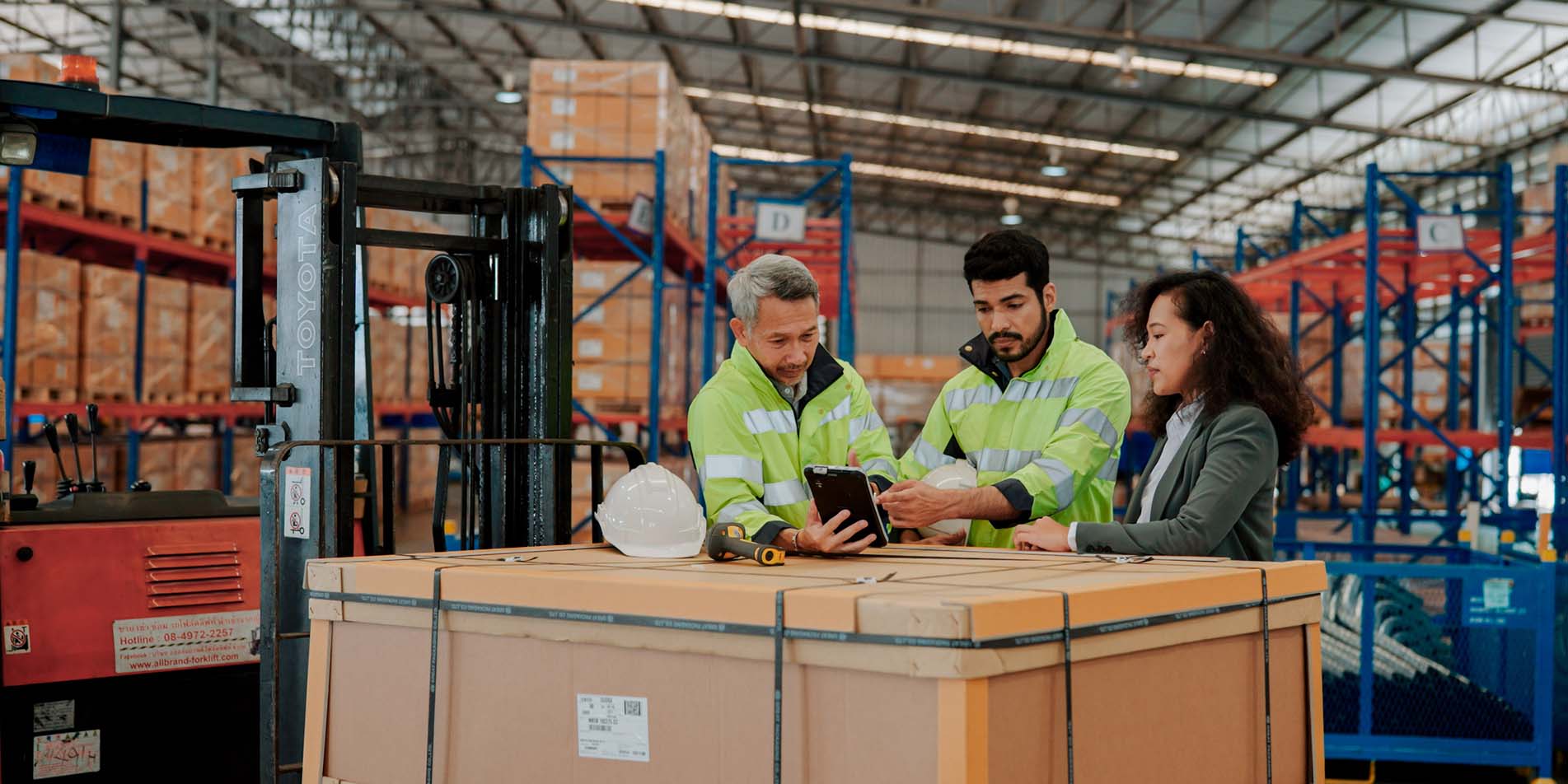Strategies to Minimise Musculoskeletal Injuries Among Workers in the Home Care Industry
InsightsArticle21 October 2024
The aged care sector in Australia is experiencing significant growth, with a 19% increase in Home Care Package recipients over the past year. Despite this, the number of home care providers has declined by 2.4%, largely due to market consolidations1.
While competition remains high, smaller providers are challenged by increasing regulatory demands and financial stability. The home care sector faces significant challenges in attracting and retaining skilled staff, impacting the ability of providers to deliver quality care. Looking ahead, the demand for care and support workers is projected to double by 2050, necessitating innovative systems and models to ensure efficient and effective service delivery2.
Increased demand and solo work conditions lead to higher injury rates in home carers
The increased demand for home care workers, compounds the problem of staff shortages. Unlike hospitals, most homes lack lifting equipment and adjustable beds. Home care workers often operate alone, increasing the risk of injury. Moving patients in cramped spaces without assistance or proper equipment frequently leads to injuries, the majority being body stressing injuries such as traumatic joint, ligament, muscle, and tendon injuries, as well as musculoskeletal and connective tissue conditions.
The medium cost of body stressing claims in health and social care assistance workers is $14,800, with a medium time lost of 9 weeks.3
When looking closer at the cause of these body stressing injuries, the figure below shows that the vast majority occur when manual handling activities occur – both when handling and assisting clients and when handling equipment and other items.

Figure 1. Claims for Body Stressing Claims by Mechanism. (source: Health care and social assistance | dataswa (safeworkaustralia.gov.au))
How do these body stressing injuries occur?
Musculoskeletal injuries generally occur one of two ways:
1. Gradual wear and tear – caused by frequent or prolonged periods of muscular effort associated with repeated or continuous use of the same body parts, including static body positions; or
2. Sudden damage – caused by intense or strenuous activity or unexpected movements such as when people who are being handled move or change position suddenly.
In most cases injuries do occur over time, that is, the event that triggered the injury may have been the 'last straw' on already damaged tissues.
Some of the factors that can increase the risk of injuries in a clients home include:
- Forceful exertion – where the body has to generate significant force to perform the task (for example moving furniture).
- Working posture – the following postures can strain body tissue, affect the amount of effort required to complete the task and quicken muscle fatigue:
- awkward postures such as twisting, bending or overreaching of the body (for example making a low bed)
- static positions where part of the worker’s body is held in one position for prolonged periods (for example prolonged squatting when showering client).
- Repetition/duration – performing a similar task over a prolonged period without a break, not allowing that part of the body to recover (for example mopping a large house)3.
What control measures can be used to reduce these injuries
The work environment shifts drastically from home to home and conditions fall outside the control of both employer and worker. However, there are methods for reducing musculoskeletal injuries. These are outlined below in the following key stages.
1. When taking on a new client
Conduct an initial assessment to understand client needs and determine the level of assistance required. Design tasks within worker capabilities and identify necessary assistive devices. Research indicates that if a caregiver is required to lift more than 15kg of a patient’s weight, assistive devices should be used for the transfer. For example, lifting both legs of a 100kg patient equals 18kg.
Assistive devices includes:
- Hoists for patients who can't stand.
- Standing aids for independent standing and transfers.
- Rolling toileting/showering chairs to minimize transfers.
- Grab bars, adjustable beds, and raised toilet seats for better leverage.
- Slip sheets to reduce effort in moving patients.
Consult physiotherapists or occupational therapists for device recommendations and training.
Perform a risk assessment of the client's home. Start with a phone assessment followed by a home visit to identify hazards like uneven steps or clutter. Negotiate necessary home modifications, such as:
- Storing items within easy reach
- Ensuring clear access through the home
2. During the course of service delivery
Home care workers should be encouraged to do the following at each client’s home:
- Check equipment is well-maintained
- Alternate between heavy and light tasks
- Follow adequate work/rest schedules
- Communicate client changes to a Team Leader
- Use alternatives like maxi taxis for wheelchair transport
- Use smaller carry cases for items.
Empower workers to report hazards like loose rugs or poor lighting, ensuring client and caregiver safety. Prompt hazard reporting supports proactive risk management and enhances care quality. This fosters a culture of accountability and creates a safer environment for everyone.
3. After an incident or injury
Encouraging early injury reporting ensures timely medical attention, preventing minor injuries from worsening and reducing recovery time. Prompt reporting also aids in thorough accident investigations, identifying root causes, and implementing preventive measures. This commitment to health and safety boosts employee morale and fosters a safety culture.
Early intervention also lowers costs associated with workplace injuries, such as lost productivity and higher insurance premiums. Reporting can be done via an app or a phone call to the Team Leader on the day of the incident. After reporting a musculoskeletal injury or early signs of pain, workers should undertake buddy shifts with a team leader to ensure proper lifting and handling techniques.
4. Organisation operational changes
In order for all of this to work, organisations need clear policies and procedures to help foster a positive organisational culture around health and safety. Key elements include:
Manual Handling Policy
- Adopt a ‘minimum lift’ approach, evaluating and controlling all people-handling tasks to minimise lifting.
Risk Assessment and Management:
- Conduct regular risk assessments for manual handling, repetitive tasks, and awkward postures.
- Implement specific assessments for high-risk activities like lifting or moving patients.
- Continuously evaluate patient-care plans to determine the need for ergonomic devices or additional caregivers.
- Reassess training, care plans, and assistive devices regularly.
- Consider wearable body sensors to monitor body stress and improve practices (eg https://preventure.live/)
Staff Training:
- Provide bespoke, task-oriented training in safe work procedures and use of mechanical aids.
- Offer face-to-face training with practical components for manual handling risks.
- Facilitate buddy shifts with team leaders for hands-on guidance.
- Regularly monitor manual handling task performance.
Work Organisation:
- Implement job rotation and task variation to prevent repetitive strain injuries.
- Ensure adequate staffing to reduce physical demands on individual workers.
Health and Wellbeing Programs:
- Start with pre-employment and continue with ongoing support.
- Promote programs to strengthen musculoskeletal health.
- Provide early intervention and rehabilitation for musculoskeletal disorders.
- Incorporate functional capacity assessments into pre-employment process.
- Use online questionnaires for initial assessments, demographic analysis, and needs assessment for both new and existing workers.
We provide expert workplace health and safety advice
To learn more about how we help organisations prioritise the health, safety and wellbeing of their employees, including more information on wearable body sensor technology, contact our Zurich Resilience Solutions team at workplace.resilience@zurich.com.au.
We are committed to supporting companies meet tomorrow prepared.
References
1 Australian aged care sector analysis 2023 - KPMG Australia
2 A guide to working safely in people's homes (worksafe.qld.gov.au)
3 Health care and social assistance | dataswa (safeworkaustralia.gov.au)



